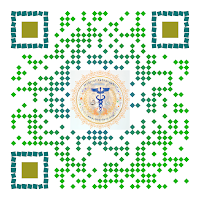- Output
>1.5 -2.0 L/24 hours leading dehydration
& dys-electrolytemia.
- Occurs in 31% of small bowel stomas.
- Daily output increases with increasing small bowel resection
- Resection of 15-50cm of terminal ileum results in an increase of >300 g/24hr vs with <15cm removed
- Mature ileostomy put out up to 1200mL/day
- Jejunostomies can put out up to 6 L/day
- Colostomies usually only put out 200-600mL/day
Normal
intestinal fluid transport
- 9 -10 L of fluid passes the ligament of Treitz/ day
- Jejunum absorbs ~ 6 L & Ileum ~ 2.5 L
- Colon absorbs rest but 100 mL excreted in feces daily.
Ostomy at ileocecal valve expected to produce 1-1.5 L of stool output/day
Containing
approximately
- 200 mEq of sodium
- 100 mEq of chloride &
- 10
mEq of potassium
In Extensive ileal resection, >100 cm, bile salts loss outpaces hepatic production, leading to bile acid deficiency & steatorrhea
Hypomagnesemia occurs in 78% with a jejunostomy.
Common
complications include:
- - Dehydration & AKI
- - Low serum sodium
- - Low urinary sodium
- - Low serum magnesium
- - Loss of Chloride & bicarbonate leading to metabolic acidosis
- - High plasma renin & aldosterone
- - Weight loss / malnutrition
- -
Low Vitamin B12 (if > 60-100cm of terminal ileum resected)
Management:
Rehydrate
& replace electrolytes
Oral
hypotonic fluid is restricted & a glucose-saline solution is sipped.
Medication
- To slow transit (Imodium/Lomotil/opioids) or
- To reduce secretions (omeprazole for gastric acid)
- Octreotide/sandostatin
- GLP-2, enhances gut adaptation, inhibits gastric acid secretion & slow emptying; stimulates intestinal blood flow; increases intestinal barrier function; & enhances nutrient & fluid absorption.
.png)
.png)
.png)

.png)

.jpg)









%20(which%20occurs%20more%20often%20in%20patients%20with%20poor%20oral%20intake,%20those%20treated%20with%20insulin%20prior%20to%20arrival%20in%20the%20emergency%20department,%20pregnant.jpg)








